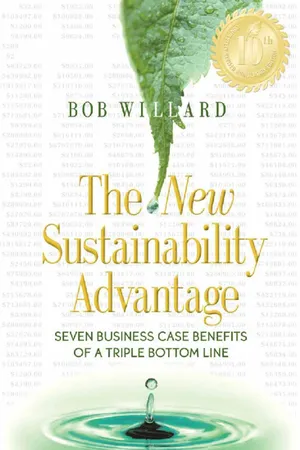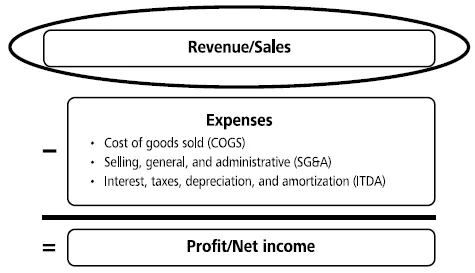
The New Sustainability Advantage
Seven Business Case Benefits of a Triple Bottom Line
Bob Willard
- 224 pages
- English
- ePUB (mobile friendly)
- Available on iOS & Android
The New Sustainability Advantage
Seven Business Case Benefits of a Triple Bottom Line
Bob Willard
About This Book
The New Sustainability Advantage shows how the benefits of the "triple bottom line" can increase a typical company's profits by fifty-one to eighty-one percent within five years, depending on the company's size and industry sector, while avoiding risks that could jeopardize its financial well-being.
Fully revised and updated, this tenth anniversary edition clearly demonstrates that, by focusing on seven powerful yet easy to grasp sustainability strategies, businesses can:
Increase revenue
Improve productivity
Reduce expenses
Decrease risks
Expressed in clear business language and presented in an appealing, graphically rich format, this practical guide and the accompanying online Sustainability Advantage Simulator Dashboard enables executives to enter their own data and quickly identify the high-leverage benefit areas for their organization. More detailed downloadable spreadsheets help them drill down into specific areas of interest and fine-tune the assumptions to their specific situation.
An indispensable tool for both sustainability champions and senior management, The New Sustainability Advantage proves that the quantified business case for sustainability is more compelling than ever before.
Bob Willard gave up an award-winning successful career in senior management at IBM to devote himself full-time to building corporate commitment to sustainability. Widely in demand as a speaker, he has delivered hundreds of presentations demonstrating the business case for sustainability to companies, consultants, academics, and NGOs worldwide. Bob is the author of The Sustainability Champion's Guidebook, The Next Sustainability Wave, and the original edition of The Sustainability Advantage.
Frequently asked questions
Information

BENEFIT 1
Increased Revenue and Market Share

Revving-Up Revenue
| FIGURE 2.1 | |
| Income Statement Framework | |
 | |
More B2C and B2B Revenue from a More Sustainable Brand
| FIGURE 2.2 | |
| Walmart’s Supplier Sustainability Index | |
| Energy and Climate 1.Have you measured your corporate greenhouse gas emissions (GHGs)? 2.Have you opted to report your GHGs to the Carbon Disclosure Project (CDP)? 3.What is your total annual GHGs reported in the most recent year measured? 4.Have you set publicly available GHG reduction targets? What are they? Material Efficiency 1.What is the total amount of solid waste from facilities that produce product(s) for Walmart in the m... | |
Table of contents
- Cover
- Title Page
- Copyright
- Dedication
- Contents
- Acknowledgments
- Preface to the Second Edition
- Preface
- Introduction
- BENEFIT 1: Increased Revenue and Market Share
- BENEFIT 2: Reduced Energy Expenses
- BENEFIT 3: Reduced Waste Expenses
- BENEFIT 4: Reduced Materials and Water Expenses
- BENEFIT 5: Increased Employee Productivity
- BENEFIT 6: Reduced Hiring and Attrition Expenses
- BENEFIT 7: Reduced Risks
- Conclusion: Potential Bottom-Line Benefits for M&D Corp
- Notes
- Index
- About the Author